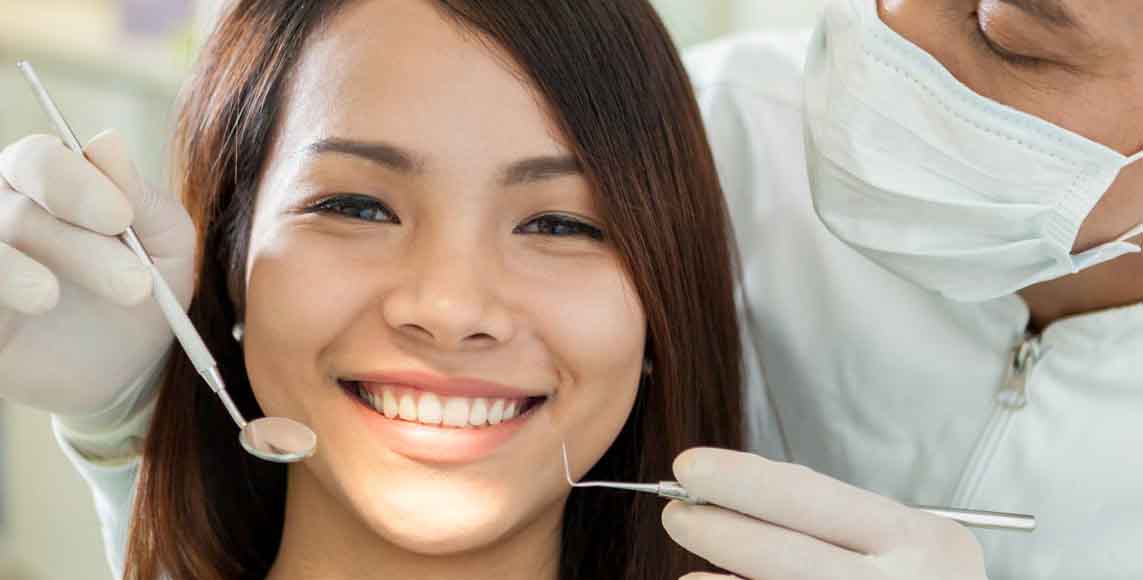
What’s the difference between dental insurance and dental discount plans?
They can both be useful in terms of reducing your total dental costs, but they vary significantly in terms of the benefits you get and how much you pay for the coverage.
Dental insurance
Dental insurance plans work like health insurance. You or your employer pay a monthly premium. After the deductible is reached (assuming there is a deductible; dental HMOs often have no deductible), the insurance pays all or part of your qualified dental expenses, up to a stated maximum. The insurance company generally pays the dentist directly for its share of your dental expenses, although dental indemnity plans may require you to pay the bill upfront and then seek reimbursement from the insurance plan.
Dental insurance plans typically have deductibles, co-pays, waiting periods, and/or policy maximums. A typical deductible might be $25 to $100 per person annually. After that, the plan will provide benefits that vary depending on the type of care received. Preventive care is often covered in full or nearly in full. But the patient will typically have to pay a portion of the charge for more extensive care. On some plans, the patient pays a percentage of the total cost, while other plans have a schedule of benefits with set amounts that the patient will pay for various procedures. On most dental plans, the annual benefit maximum generally ranges from $1,000 to $2,000, although there are outliers on both ends.
Dental HMOs require the insured to select a primary care dentist from the plan’s provider network, and all care must be coordinated through that dentist; out-of-network dental care typically wouldn’t be covered at all under an HMO. Dental HMOs generally don’t have a benefit maximum; instead, they’ll have a set copay amount that the insured pays for each procedure. (Here’s an example of a dental HMO plan’s schedule of benefits.) Dental HMOs are more common for employer-sponsored dental plans than they are in the individual market. If you’re purchasing your own dental plan, most of the available options will have an annual benefit maximum.
Dental PPOs allow insureds to select from any dentist in the provider network, and most will also provide partial benefits if the insured seeks care from a dentist who isn’t in the network. Dental PPO plans typically have a deductible and an annual benefit maximum, and cover a percentage of each dental procedure based on whether it’s classified as preventive (e.g. x-rays, cleanings), basic (e.g. fillings, root canals, extractions), or major (e.g. crowns, implants, dentures, oral surgery). It’s also common for the plans to have waiting periods for basic and major services; common waiting periods are six months and 12 months, respectively, although it varies from plan to plan.
Dental indemnity plans allow insureds to see any provider, with no network restrictions. Dental indemnity plans will pay a pre-determined percentage of the “usual and customary” charges for a given procedure, which means you’ll pay more if you visit a dentist who charges more than the “usual and customary” amount. Since there’s no network for an indemnity plan, dentists are not required to limit their fees based on a network contract. Indemnity plans typically have a deductible, annual benefit maximum, and waiting periods for non-preventive care, just like PPO plans.
Typical dental insurance premiums are $20-$50 per month for an individual and $50-$150 for a family, but they vary considerably based on the type and scope of coverage. If your employer is offering the plan, they may pay a portion of the premium for you. If you’re buying the plan on your own, you’ll pay the full cost yourself. The ACA’s premium subsidies don’t apply to stand-alone dental plans for adults, even if they’re purchased through the health insurance exchange in your state.
For children, pediatric dental coverage is one of the ACA’s ten essential health benefits, and premium subsidies sometimes offset a portion of the cost of a stand-alone pediatric dental plan. But even with the ACA’s regulations, dental coverage, price, and plan availability vary widely from one area to another.
Dental discount plans
Dental discount plans differ from dental insurance mainly because they DON’T pay any dental expenses for you. Instead, they provide discounted prices from participating dentists.
There are generally no deductibles, no waiting periods, and no annual maximums. Typical discounts range from 10 to 60 percent for normal dental work. Plans cost as little as $100 annually for individuals and $150 for families.
If you know you’re going to need extensive dental work, a dental insurance plan with benefit caps and waiting periods might not provide much help. But a dental discount plan could save you significantly more than the cost of its membership fees, particularly if you need several dental procedures during the year. Since membership benefits for an individual are typically less than $150 per year, a member would come out ahead with even small discounts on a few significant dental procedures. But it’s important to keep in mind that even with a dental discount plan, you’ll still pay a significant chunk of the cost of dental work, particularly if you need extensive work done.
If you’re considering a discount dental plan, contact some of the dentists on the network and discuss actual charges with them to determine how much you’ll save by using the plan. (Note that dental discount plans are not the same thing as medical discount plans; the latter should generally be avoided, given how high out-of-pocket medical costs can climb without health insurance).
Other discount options
It also pays to be aware that some dental discounts can be obtained simply by asking for them. A dentist may be willing to offer you a discount in trade for agreeing to standing biannual appointments, paying cash at the time you receive services, or referring other patients. For those who don’t already have a dentist, free exams and x-rays are frequently offered to new patients.
Reduced-cost dental care is also available at dental schools, and many communities have charity dental programs available for low-income patients. Shop around for discounts prior to obtaining dental care, even if you don’t have any sort of dental coverage.
Louise Norris is an individual health insurance broker who has been writing about health insurance and health reform since 2006. She has written dozens of opinions and educational pieces about the Affordable Care Act for healthinsurance.org.









